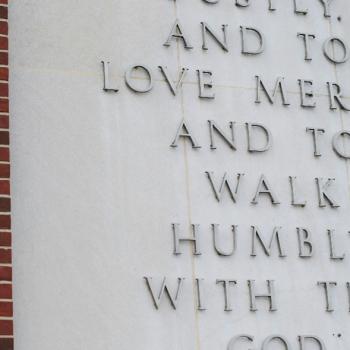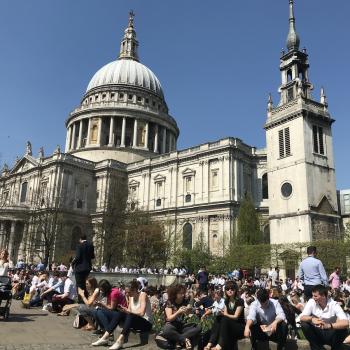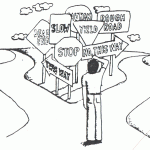You’ve heard of the fight, flight, freeze, and fawn fear responses. Trump supporters demonstrate each of these. But what are they afraid of?

It’s easy for liberals to become frustrated with conservatives. Especially when that conservatism turns to White Christian Nationalism and Trumpism. While you may disagree with their politics, it’s important to recognize that anger is fear turned outward. At its core, Trumpism utilizes fear as its greatest tool. Trump followers show signs of the fight, flight, freeze, or fawn responses to fear. But what are they afraid of?
The Root of Trumpism is Fear
The root of Trumpism is fear. This is ironic, since so many refused to mask during COVID, declaring loudly, “I will not live in fear!” Yet, ultraconservatism at its core is based in fear. Xenophobia is fear of that which is foreign. Trumpism plays on fears that foreigners will come in and take your jobs, rape your wives and daughters, and force you to live in a society that has adopted foreign values. Homophobia and transphobia are essentially the same narrative, with gay people threatening to sweep your children away in perversity and gender confusion.
Ableism likewise is based on fear. People tend to make fun of the things that scare them, and what able-bodied person isn’t afraid of the potential for their own disability? So, we make fun of what frightens us. Racism is when the dominant group fears losing its power to a growing minority group. To liberals, White Christian Nationalism and Trumpism just seem like an angry movement. But it might help to recognize your ultraconservative neighbors are more afraid than they are angry.
Fight, Flight, Freeze, & Fawn
You’ve probably heard of the fight, flight, freeze, or fawn responses to trauma. Here are a few ways we have seen Trump’s followers exhibiting these responses:
Fight
- ‘Murcia trucks. You’ve seen those jacked-up pickup trucks with a giant pair of American flags flapping behind them, mimicking the balls dangling beneath them. These are one way that Trump followers fight. No, it’s not just patriotism that these American flags represent. It’s the kind of Testosterone-driven intimidation you feel when one of these oversized trucks tailgates you on the highway. The kind of Jason Aldean, “Try That in a Small Town” attitude that reminds you of the AR-15 in the gun rack and the axe handle in the floorboard. Even if they don’t say “Trump,” everyone knows what these ‘Murcia trucks are all about.
- Election intimidation. Remember the October 2022 elections in Maricopa County, with uniformed vigilantes who took it as their civic duty to patrol polling locations, displaying weapons to intimidate voters. When intimidators carry weapons, this steps it up to another level.
- Social media bullies. Social media has become a platform for spreading political beliefs, and that’s fine. But among Trump followers, social media is a forum for racism, homophobia, transphobia, xenophobia, ableism, and all the bullying that Donald Trump has made so popular. It’s gotten worse since Trump’s felony convictions, with ultraconservatives blowing dog whistles.
- January 6. To date, there is no greater example of violence at the hands of Trump‘s followers than the January 6 insurrection at the capital. I’m concerned that when Donald Trump loses this year’s election, that insurrection will look like a street scuffle. MAGA Christians must realize that Trump is playing into their fears and provoking their fight reflex.
Flight
- Carving up the country. When certain states have abortion bans while others offer women freedom of choice, this polarizes the country based on geography. I know multiple people who have moved or are considering moves based on political ideology. Leaving family and friends, these political pilgrims choose ideology over relationship.
- Withdrawing into cloistered conservative churches & communities. On a more local scale, this is similar to the point made above. Just like White flight from urban areas to suburban and rural areas, ultraconservative church members abandon moderate congregations where they have built deep, meaningful relationships. Homophobia, transphobia, and other politicized issues lead to polarization and flight to echo chamber communities.
Freeze
- Societal freeze. By definition, conservatism is designed to conserve the status quo. Conservatism is anti-growth, anti-change, anti-learning, and anti-progress. Just as the Amish live as if it’s still the 1800s, contemporary social conservatives want to freeze America as if it were in the 1950s. Just take a look at Project 2025 to see what I mean.
- Brain freeze. The freeze response shows up most prominently in the ultraconservative tendency to deny facts. Conservatives do this because they have so much invested in the current system that it would cost them too much to change. They fear loss due to change, denying evidence that things are changing. Some examples of this include denial of the 2020 election results, denial of climate change, denial of the science surrounding sexual identity and gender studies, denial of the legitimacy of Donald Trump’s latest convictions, and denial of just about any news source that doesn’t agree with their confirmation bias. This freeze response allows Trump followers the luxury of believing that conservative evangelical nationalists still hold the dominant power in the United States. This freezing of the brain is a head-in-the-sand approach to their fear of change.
Fawn
- Most people are familiar with the fight, flight, or freeze response. For some, the fawn response is a new concept. Imagine a small kid who feels bullied on the playground. They know they can’t fight their own battles, so they find the biggest kid around to do it for them. Thinking he will protect them, they fawn all over him. He becomes their savior, their chosen one, their Cyrus. It wouldn’t matter what kind of despicable person he was, as long as he would protect them from their bully. They wear hats to promote his “Make the Playground Great Again” slogan. They sing songs about him, declare him to be God’s man for such a time as this, and no matter what crimes he is convicted of, they still vote for him as King of the Playground.
Fear Turned Outward
To the eye of most liberals, the behavior of Trump followers seems motivated by hate and anger. But we must remember that hate and anger are simply fear turned outward. Trump supporters are afraid of personal and societal loss due to change. They demonstrate this fear by their fight, flight, freeze, and fawn response.
Keep the Fear-Motivation in Mind
As you engage in political conversation with Trump followers, keep this fear motivation in mind. You won’t change their minds if you call them out on their hatred and anger. But, if you address their fears and provide solutions other than fight, flight, freeze, or fawn, they might listen. Because people don’t want to live their lives constantly responding to trauma and fear. That kind of elevated blood pressure isn’t sustainable in the long term.
Speak to their Fear
A few days ago, one of my clients who often lives in a homeless condition but is currently incarcerated spoke rudely to me. I was there to help him navigate the legal system, get him connected to medical and mental health services, and meet many of his other needs. But he was too blinded by fear to respond positively. I had a choice to make if I wanted to engage him successfully. I could either get offended by his verbal abuse, or I could let him know that I could see his pain and recognize his fear. By speaking to the fear, I could de-escalate him so that we could get things done.
Bad Behavior is a Trauma Response
May this be the case with the MAGA Christians in your life. May you recognize that fear, rather than hate, is their main motivation. Observe that their troublesome behavior is a trauma response. Understand that angry people are motivated by fear. You can win hearts, save relationships, and have influence by addressing their fear, not their anger.


















